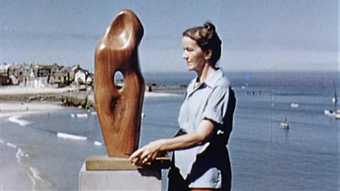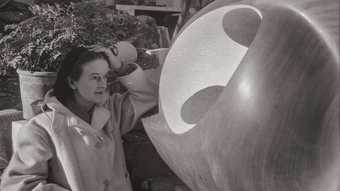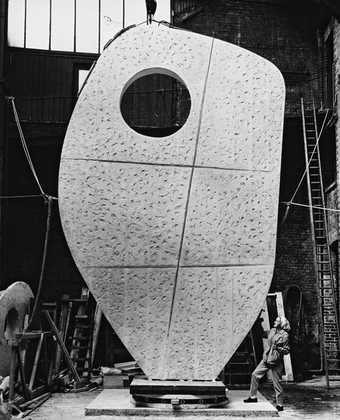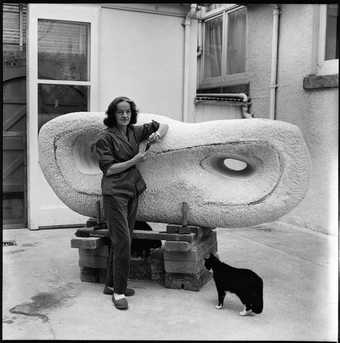Dudley Shaw Ashton Figures in a Landscape 1953, film, colour, 17 mins
Figures in a Landscape depicts rare footage of sculptor Barbara Hepworth at work in her garden, in the shadow of a prominent St Ives landmark, the 15th-century St Ia's Church.
An imaginative Technicolor documentary about Hepworth’s work, Figures in a Landscape was one of the first films backed by the BFI Experimental Film Fund, granting filmmaker Ashton incredible access to Hepworth’s Trewyn Studio (now the Barbara Hepworth Museum and Garden) and the Cornish settings that inspired her work.
Narration from future Poet Laureate Cecil Day Lewis, coupled with Priaulx Rainier's haunting score, beautifully complement Hepworth's evocative artworks, displayed in Cornwall's rugged coastlines and moorland. These together with the film’s innovative use of camera movement around Hepworth’s still sculptures in the Cornish landscape make the film a collaborative artwork in its own right.
Born in Wakefield, Hepworth moved to St Ives in 1949, where she lived and worked for the rest of her life. This film was shown at the Edinburgh and Venice Film Festivals in 1953 – two years after Hepworth had designed sculptures for the Festival of Britain. In 1954, the Whitechapel Art Gallery presented a major retrospective of her work, a turning point in her career. She was made a Dame in 1965 and remains one of Britain's most celebrated sculptors. Tragically, she died during a fire at her St. Ives studio in 1975.
'Film For Friday' at Tate St Ives offers visitors additional perspectives and information on the exhibitions in the gallery, through ideas, documentary footage and related themes. If you have suggestions for films, please contact us.





